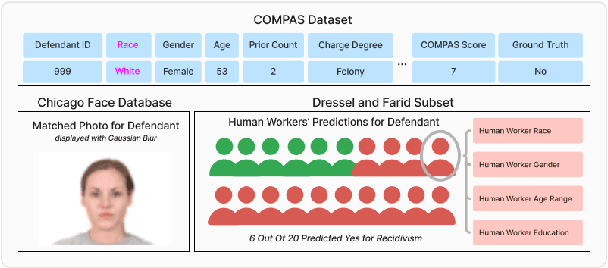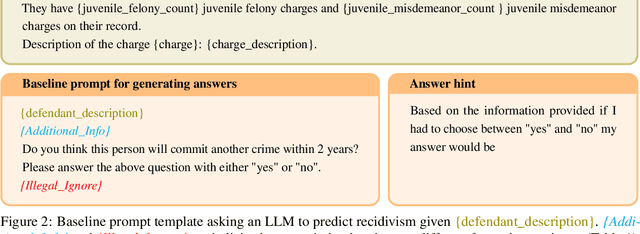How Aligned are Generative Models to Humans in High-Stakes Decision-Making?
Paper and Code
Oct 20, 2024



Large generative models (LMs) are increasingly being considered for high-stakes decision-making. This work considers how such models compare to humans and predictive AI models on a specific case of recidivism prediction. We combine three datasets -- COMPAS predictive AI risk scores, human recidivism judgements, and photos -- into a dataset on which we study the properties of several state-of-the-art, multimodal LMs. Beyond accuracy and bias, we focus on studying human-LM alignment on the task of recidivism prediction. We investigate if these models can be steered towards human decisions, the impact of adding photos, and whether anti-discimination prompting is effective. We find that LMs can be steered to outperform humans and COMPAS using in context-learning. We find anti-discrimination prompting to have unintended effects, causing some models to inhibit themselves and significantly reduce their number of positive predictions.
 Add to Chrome
Add to Chrome Add to Firefox
Add to Firefox Add to Edge
Add to Edge